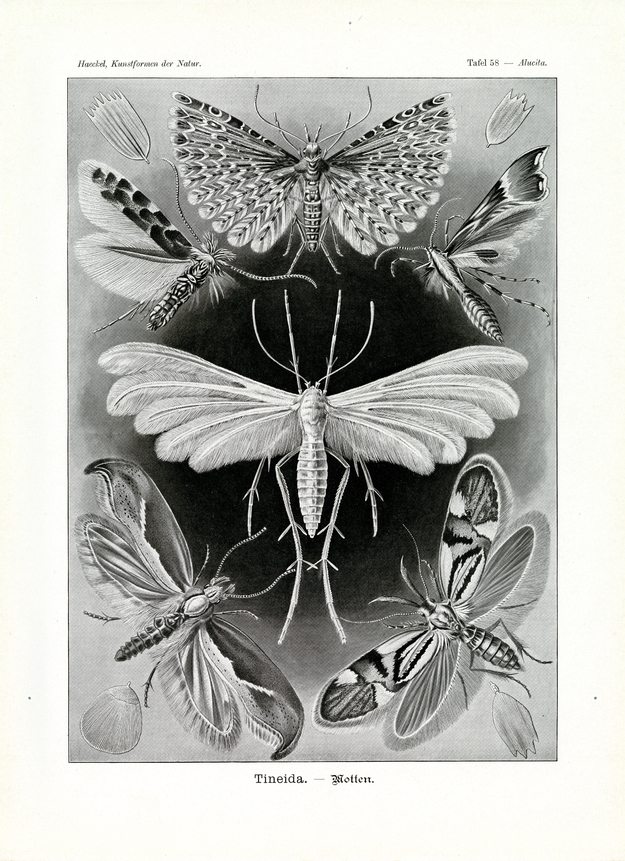Translation of the original German introduction by Ernst Haeckel:
The family of moths (Tineida) and ‘feather moths’ (Pterophorida) comprises the smallest, most tender and unsightly butterflies. Nevertheless, many species of the so-called ‘small butterflies’ (Microlepidoptera) are distinguished by very delicate shapes, subtle markings and tender colours. Looking at a few of these small moths with minor magnification convinces that these most modest representatives of the diverse order of butterflies are, in aesthetical respect, in no way inferior to the larger, more impressive and colourful forms of this magnificent group. With their extraordinary beauty and diversity butterflies not only surpass the majority of other insects, but of the vertebrates in general. It is determined by the diverse colouration and organization of the so-called “butterfly-dust”. Each grain of this dust is a leaf-like scale of ovoid or tile-like shape (fig. 2a, 26, Sa, Sb). With high magnification these scales (actual leaf-shaped chitin-hair) show a very fine lining. Ordinary moths (Tineida, fig. 4-6) possess two pairs of undivided wings like most other butterflies. As usual, the front wings are broader and stronger than the back wings, the back rims of which are heavily fringed.
Pterophorida (‘feather moths’ or ‘small feather spirits’, fig. 1-3) are distinguished from all other butterflies by the deep-split or radiant-shaped wings, divided into lopes, the lopes being fringed in feather shape. Within the genus of Pterophorus (fig. 2, 3) the front wings are double-columned, the back wings tripartite; when relaxed the wings are folded and stretched horizontally. Within the genus of Alucita (fig. 1) the broad front wings as well as the more slender back wings are fissured into six feathers each: when relaxed the wings are spread fanlike. Pterophorida are furthermore distinguished from all the other butterflies by the striking length of their hind legs; the lower legs (tibia) measure more than 2112 times the length of the upper legs.
Translation by VR Translators Bangalore
We've scanned the original lithography at 1200dpi on the Epson A3 scanner of A3 scanner huren. You can download a 400dpi JPEG here.
